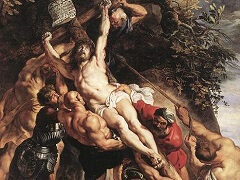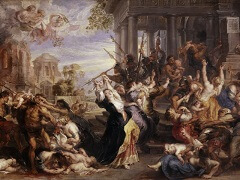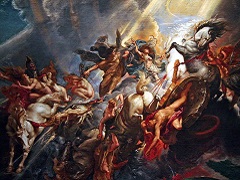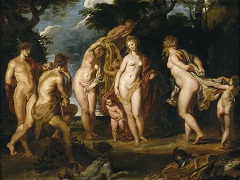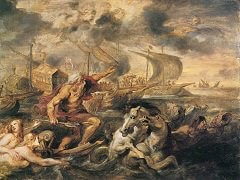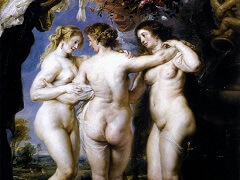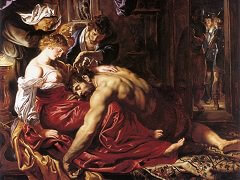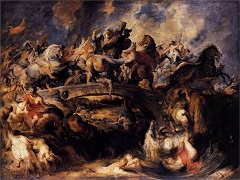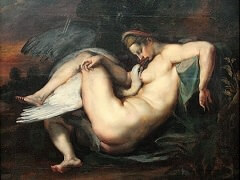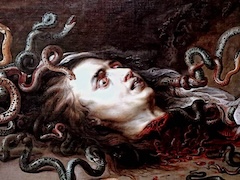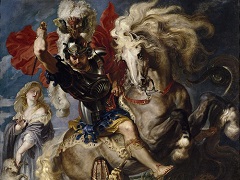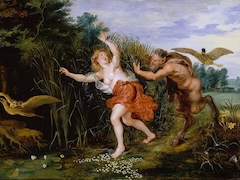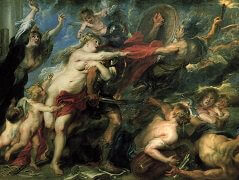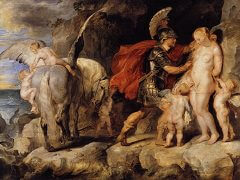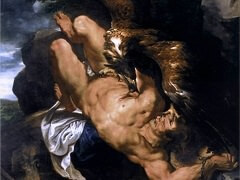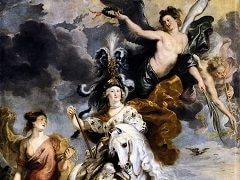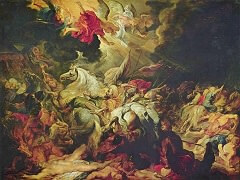The Landing of Marie de Médicis at Marseilles, 1623 by Peter Paul Rubens
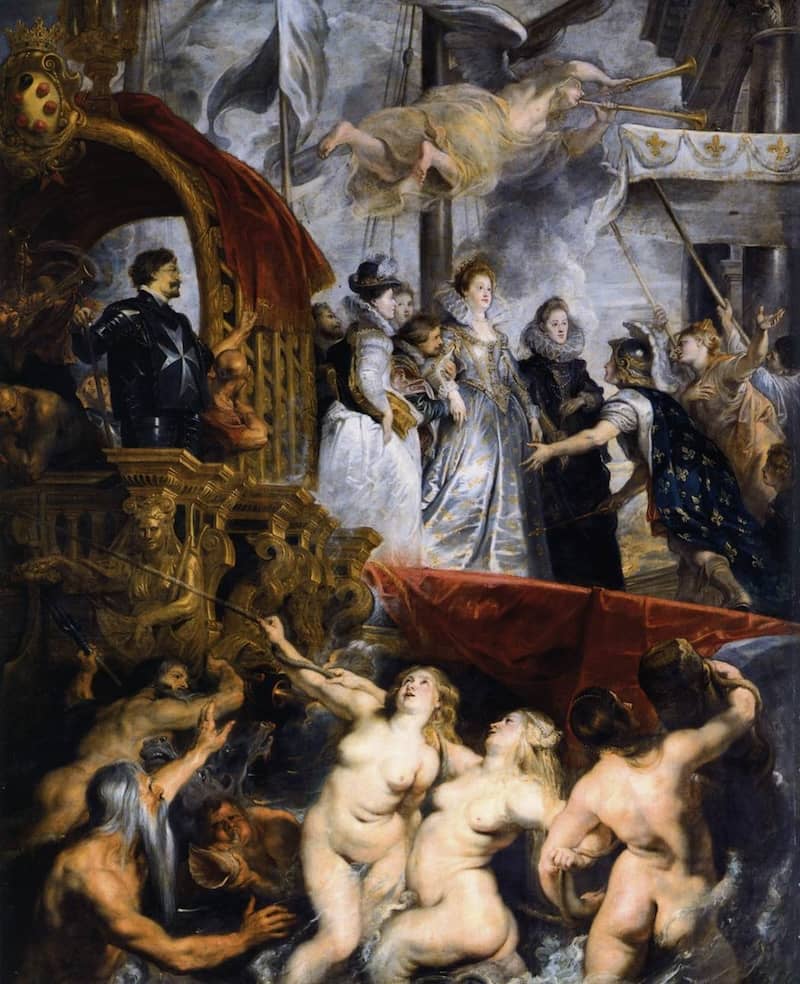
Thanks to his organisational capacities, Rubens could meet demand and revolutionise the problem of large-scale pictorial decoration. His renown extended well beyond the frontiers of his country, and in 1621 Marie de Médicis, widow of Henri IV of France and mother of the reigning king Louis XIII, invited him to Paris. She wished him to decorate one of the galleries of the newly built Palais de Luxembourg with 24 monumental paintings commemorating episodes in the lives of herself and her renowned husband. The creation of a cycle of tapestries had, in a sense, been Rubens' technical apprenticeship for this demanding task, the composition of a cycle of vast narrative paintings dedicated to a living queen who had already entered history.
Giving epic treatment to this biographical subject, Rubens was also able to give free rein to his fertile invention. He prepared two series of oil sketches, with detailed figures drawn in, which it then fell to his assistants to scale up to the dimensions of the canvases commissioned. These were then meticulously retouched by the master so that they might be ultimately be described, at least in the final layers of paint, as his own works. The entire commission was completed in only three years.
All of his prodigious culture was drawn on for these works: his encyclopaedic knowledge of classical mythology was exploited to the full in transforming the queen's entire career - Henri slipped rather into the background - into a kind of operatic sequence largely of Rubens' own invention. Metamorphosing life into myth, he freely mingled historical personages with the gods of Olympus, who came to represent them. The scheme of this apparatus was invented as he went along, the - often gratuitous - interpolations of the divine gracefully leavening the uneventful royal life. It had required all of Rubens' imaginative resources and natural verve to ennoble and illustrate the relatively colourless circumstances of the Queen Mother's life. These qualities were essential; Rubens' international renown depended on his success in this formidable commission. His solution was to populate his compositions with nude goddesses, pagan gods, curvaceous undines, mischievous tritons, and genii unspecified. His customary contrasts are at work in the playful opposition of gleaming cuirasses and lusty bodies, fragile silks and the rugged hulls of dreadnoughts. The poverty of his subject was utterly transcended; this is pure painting, nothing but painting.
Certainly, it was not the rather heavy features of the Medici family, particularly evident in the queen, that had attracted Henri IV, but the scale of her dowry. Rubens nevertheless contrived to render her portrait agreeable. He disguised her now as an attractive Bellona, now as a proud horsewoman in The Capture of Juliers. The royal couple become Olympian deities in The Meeting of Marie de Médicis and Henri IV at Lyon, while The Fate Spinning Marie's Destiny and The Triumph of Truth became pretexts for a proliferation of female convexity.

